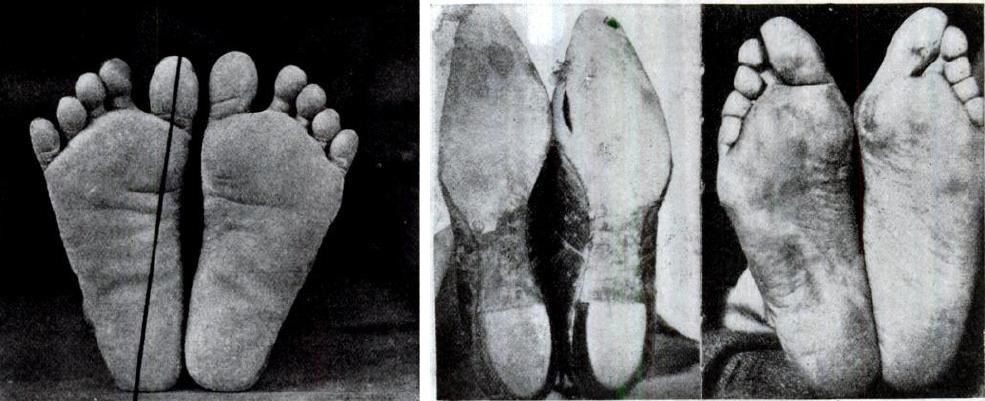The Foot: The Foundation of Balance
Essential Points:
The Foot is the Foundation of Balance: The foot plays a critical role in maintaining balance, serving as a stable base in the body’s "Joint-by-Joint" system. If foot stability is compromised, it can lead to dysfunction higher up the body, increasing the risk of injury.
Foot Mobility and Adaptability Are Essential: While stability is key, the foot must also be mobile to adapt to different surfaces, ensuring proper alignment and balance. A healthy foot needs to move, mold, and stabilize efficiently for optimal function.
Modern Footwear Negatively Impacts Foot Health: Modern shoes, with their restrictive designs and thick soles, inhibit the foot’s natural movement and sensory feedback. To restore foot function and balance, a focus on barefoot activities and corrective exercises is essential.
Articles in this 3-Part Series:
The Foot: The Foundation of Balance
The human foot is a marvelous work of art and an undeniable functional powerhouse. It contains 26 bones (roughly 1/8 of all the bones in the body), 33 joints, and more than 100 muscles, tendons, and ligaments. For comparison, your hand is made up of 27 bones, at least 27 joints (depending how you count), and 34 muscles. These two body parts are meant to be incredibly functional in their own rights, yet unfortunately feet have slipped into a second-class position with little understanding over the last century compared to the hand. Today, I want to talk about why feet deserve first class attention and how they make up the foundation of our body’s balance system.
The Joint-by-Joint Concept
Let us start from the ground up. I want to introduce the idea of the Joint-by-Joint Concept popularized by Michael Boyle and Gray Cook. This concept at its core states that the body is made up of alternating stable and mobile joints that lead to an overall functional movement system. If one part of the system is not following the program, issues may be seen elsewhere in the chain. The joint classifications are listed below:
Foot = Stability
Ankle = Mobility
Knee = Stability
Hip = Mobility
Lumbar Spine = Stability
Thoracic Spine = Mobility
Scapula-Thoracic = Stability
Glenohumeral = Mobility
Cervical = Stability
Elbow = Stability
Wrist = Mobility
Hand = Stability
Let us define what stability and mobility mean using Dr. Aaron Horschig’s definitions from his book The Squat Bible.
Stability: “Describes the ability of the joint complex to maintain position while motion takes place somewhere else. This is simply the ability to control the motion at a certain segment. Stability can also be synonymous with the term motor control.”
Mobility: “Describes the ability of the joint complex to move freely in an unrestricted manner through full range of motion. In basic terminology, this is our ability to move at a certain segment.”
Using Dr. Horschig’s definition of stability, we can see that the foot is essentially the stable base of a Jenga tower in the form of the human body. If the foot lacks stability and motor control, the body higher up the chain will show dysfunction and consequently be more prone to injury. For example, in the picture below we see that picture A shows a stable foot leading to proper alignment at the knee and hip. In picture B, the foot has lost stability and collapsed inward creating a valgus moment at the knee. Now, because of dysfunction at the base of the body, the knee is exposed to excessive abnormal forces leading to potential injury. As a quick aside, this is a simple example and it is important to note this instability may also arise from the hip if the foot is cleared during a therapist’s initial examination.
https://www.researchgate.net/profile/Brian_Clausen/publication/268392375/figure/fig2/AS:273935187050497@1442322647227/Knee-alignment-A-Knee-over-toe-position-that-is-lower-extremity-well-aligned-with.png
Beyond the Idea of Foot Stability
I want to make an important point, one which I think has caused massive confusion in the health, fitness, and medical worlds. Yes, the foot is meant to be stable as per the Joint-by-Joint Concept, BUT the foot is also meant to adapt and move to find an optimal position to become stable in. This inherently requires some level of mobility. The foot’s sole mission is to give us a solid foundation no matter our environment. Think of walking over a rocky shoreline. The foot provides us stability to keep us upright while walking. To get there, the smaller joints in the foot must mold over whatever bumps and grooves we walk on before assuming these stable positions, hence the need for baseline mobility. If our foot can mold to the environment correctly and assume a stable position while maintaining this mold, then our body maintains proper alignment and thus overall balance. Mission accomplished.
After all, remember the foot has 33 joints and 100+ muscles, tendons, and ligaments. Feet were made to MOVE, MOLD, and STABILIZE. If our feet can accomplish these three tasks efficiently, our foundation for balance is set and optimal foot function is attained. The only issue is we have created an environment for our feet that makes these three steps hard, if not impossible, for most people. But why?
Our culture has made it normal to wear shoes that dull our foots sensory feedback, mold our foot into unnatural shapes, prevent the individual joints from moving, and weaken the musculature via artificial support. We have essentially made it not only acceptable, but expected to wear soft casts on our feet daily which dull our foots natural abilities. In fact, health professionals often promote these very shoes to “help” foot issues inadvertently adding fuel to the fire long term. I will save my diatribe on shoes for another article, but I think it is important to note that most of our balance problems, and potentially knee and hip issues, can be in part fixed with smarter use of shoes. For now, let us focus on how a proper functioning foot works and facilitates proper balance.
The Optimal Foot
To see a foot in its purest functional form there is no better place than to look at a baby’s foot. As shown below, a baby’s foot is unmarred by years of wearing shoes and shows exactly how a human foot is meant to be.
https://www.correcttoes.com/foot-help/wp-content/uploads/2015/10/BabyFoot.png
A baby’s foot essentially creates a V-shape. From heel to toe the foot gets wider. The widest point of the foot is between the 1st and 5th toes. This V-shape allows for an increased base of support and thus increased foot stability and balance. An adult analog to this functionally shaped foot can be seen in cultures around the world who are barefoot much of their life, similar to the picture below.
https://www.thepeacefulrunner.com/images/1905-barefeet.jpg
In addition to a nice V-shaped structure, the optimal foot is muscular and strong from years of unabated use. A strong foot can withstand high forces without losing its functional arch, and the toes are able to move independently to perform grip-like functions akin to fingers. Having a strong foot allows for full stability and control creating a sturdier base for the body to generate movement from. Finally, the optimal foot is fine tuned to receive an enormous amount of sensory information coming in every millisecond. A foot optimized to receive information from the external world can adjust and adapt at a moment’s notice allowing the appropriate muscular corrections to be made leading to maintenance of overall bodily balance.
Unfortunately, today’s modern feet have been marred by shoes, unlike the natural feet above. We typically have what I describe as a diamond like shape from years of cramped toe boxes leading to a reduced base of support. As you can see in the comparative image below, the widest part of a typical modern foot (right) is the 1st-5th metatarsal heads not the 1st-5th toes as seen in the natural foot (left). Our feet today are typically underdeveloped muscularly secondary to artificial shoe supports, which has led to an inability to mold and stabilize the foot. Lastly, our feet have become deprived of sensory information due to thick rubber soles designed to limit our connection with the ground. All of this has led to the modern inefficient foot, and a large reason for the balance deficits many of us see in our patient populations.
https://1.bp.blogspot.com/-ekgYQQ4jbf8/TWK0ET_jjdI/AAAAAAAAAoQ/-aQd_FR6v1k/s1600/feet.jpg
Final Thoughts
As a final note, the foot was made to be wide, strong, and sensitive. It has more bones, joints, and muscles than almost any other part of the body for a good reason. Unfortunately, we have forgotten this fact. We have taken what is supposed to be our self-sufficient foundation of balance and eroded its natural ability through modern footwear technology and lifestyle choices. Although we did this with good intentions, our feet and body have paid the price. I believe that we can reclaim our natural, optimal foot and restore our natural balance abilities, but it will take work. We need to utilize footwear smartly as a tool to enhance our life, not detract from it. We also need to reclaim the natural function of the foot through normal barefoot use and targeted corrective exercises. If we do these things, we all can reclaim our optimal foot and build the solid foundation of balance we deserve, and our patients deserve.
In my next two articles, I will discuss in deeper thought how chronic shoe use has destroyed our feet and how we can reclaim our natural abilities for improved balance and functionality.
Thank you for reading the article! I would love to hear your thoughts below in the comments. What do you think about the current state of feet? Do you agree that we have created a less than optimal environment for foot health? How do you think we should go about optimizing our patient’s feet through therapy?
If you want to get some awesome natural footwear that can help you reclaim your naturally strong foot check out Earth Runners, Lems Shoes, and Xero Shoes.
Happy falling!
Special thanks to Siobhan McConnell for editing this article.





